
How to Use MASSIVE RC V2: Examples, Pinouts, and Specs
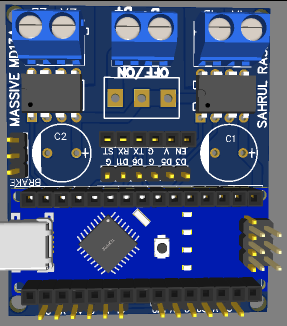
 Design with MASSIVE RC V2 in Cirkit Designer
Design with MASSIVE RC V2 in Cirkit DesignerIntroduction
The MASSIVE RC V2 is a high-performance remote control system designed for precise and reliable control of various electronic devices. Manufactured by Massive, this component features advanced signal processing and robust connectivity options, making it ideal for a wide range of applications.
Explore Projects Built with MASSIVE RC V2
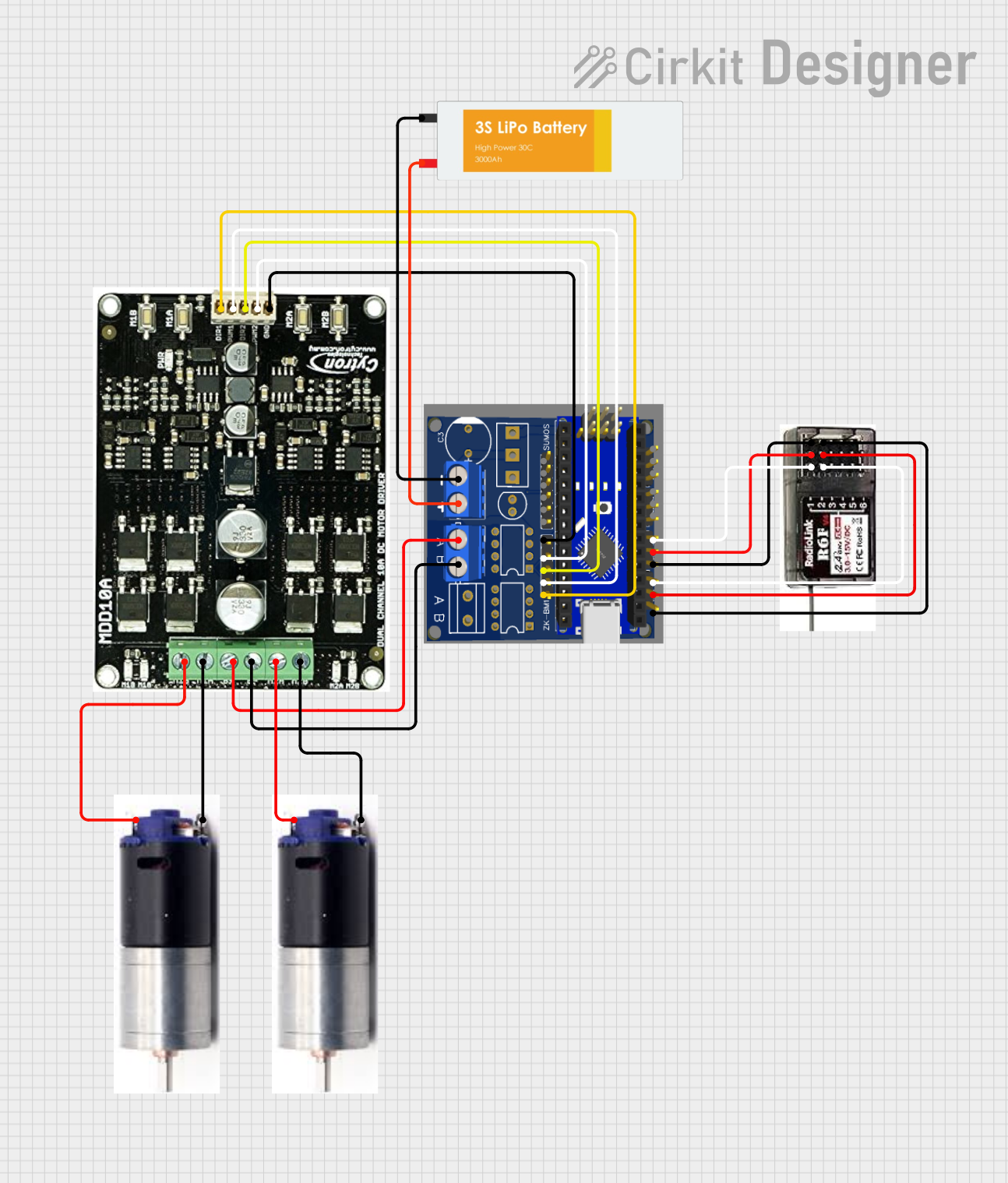
 Open Project in Cirkit Designer
Open Project in Cirkit Designer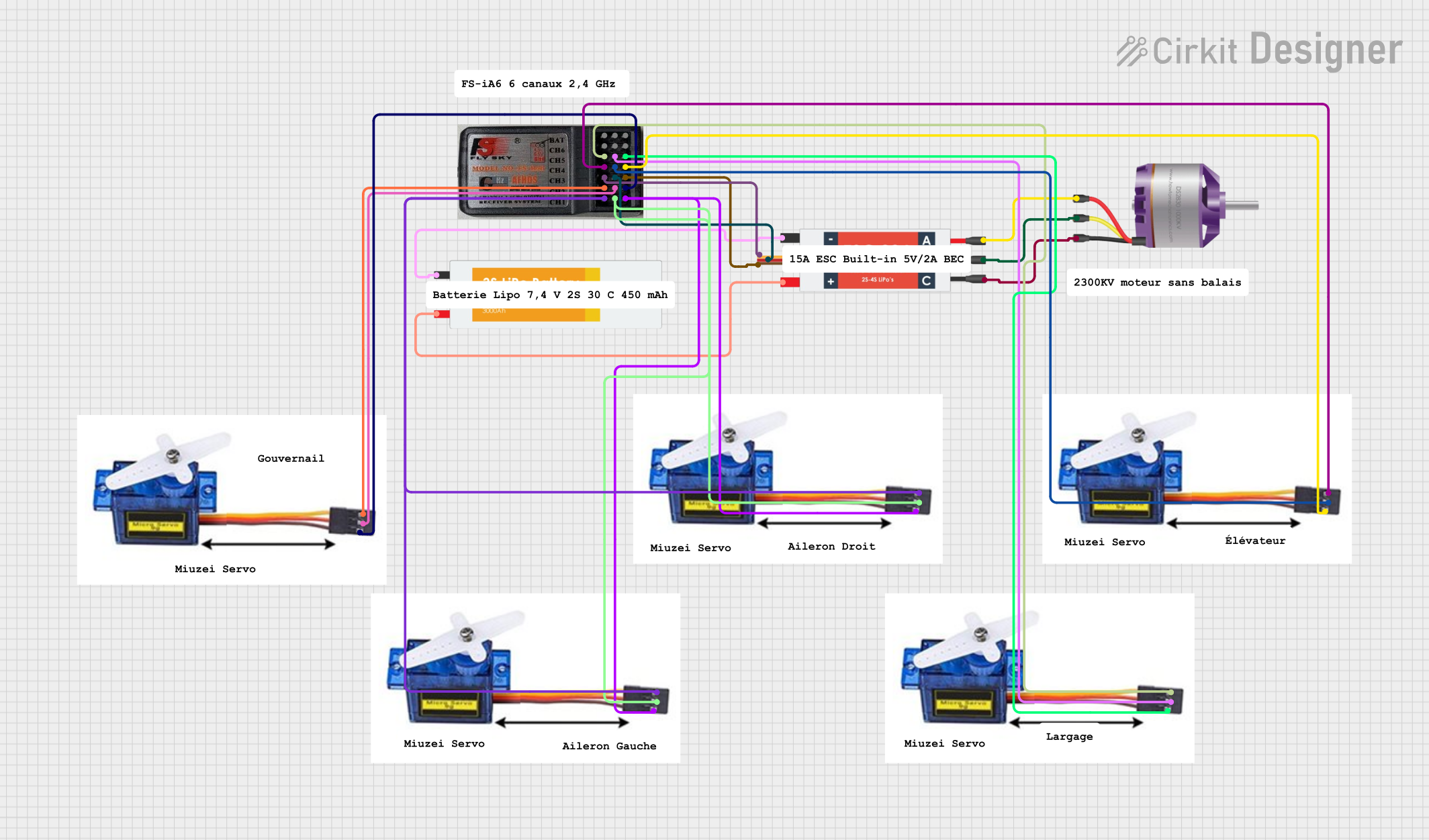
 Open Project in Cirkit Designer
Open Project in Cirkit Designer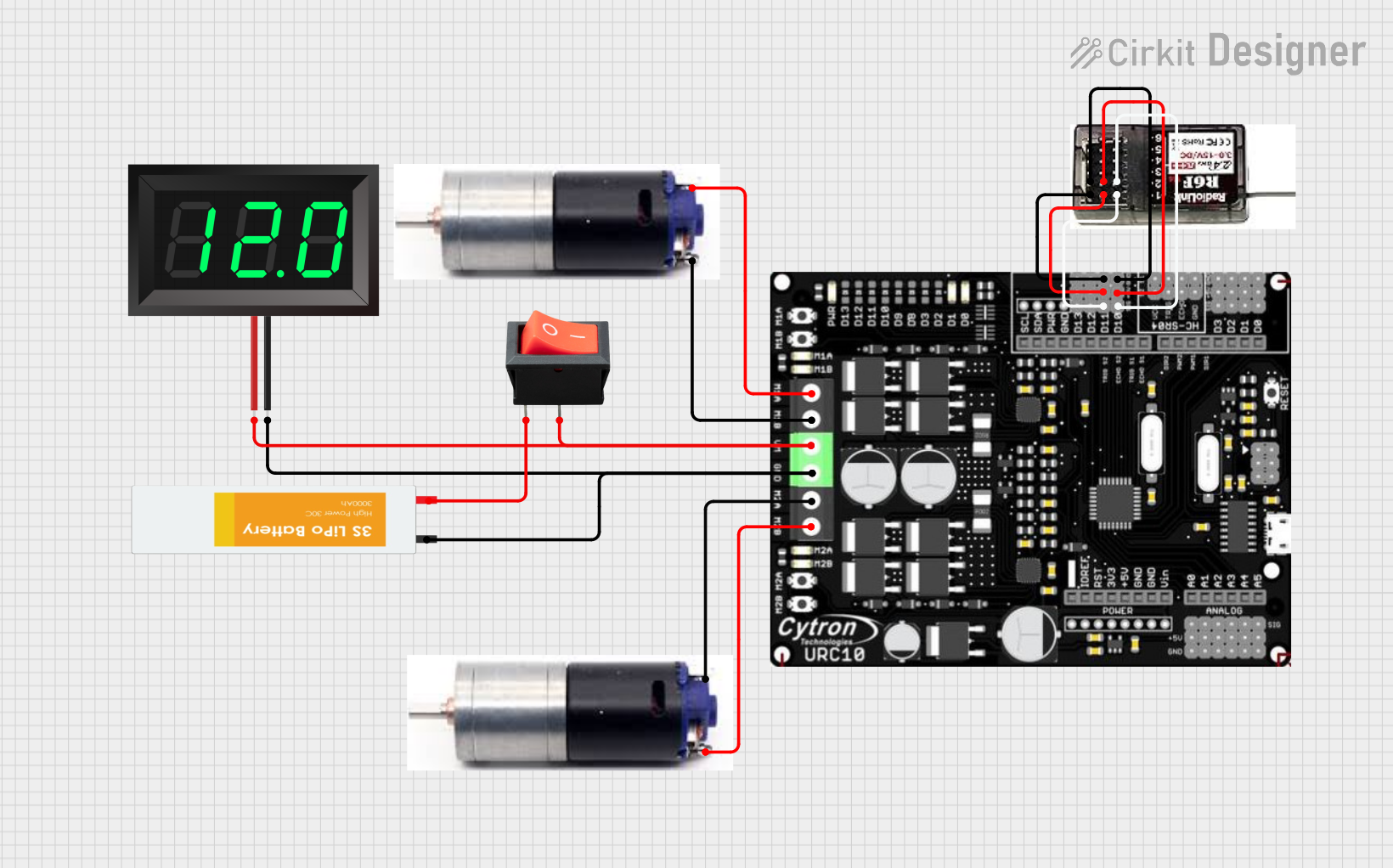
 Open Project in Cirkit Designer
Open Project in Cirkit Designer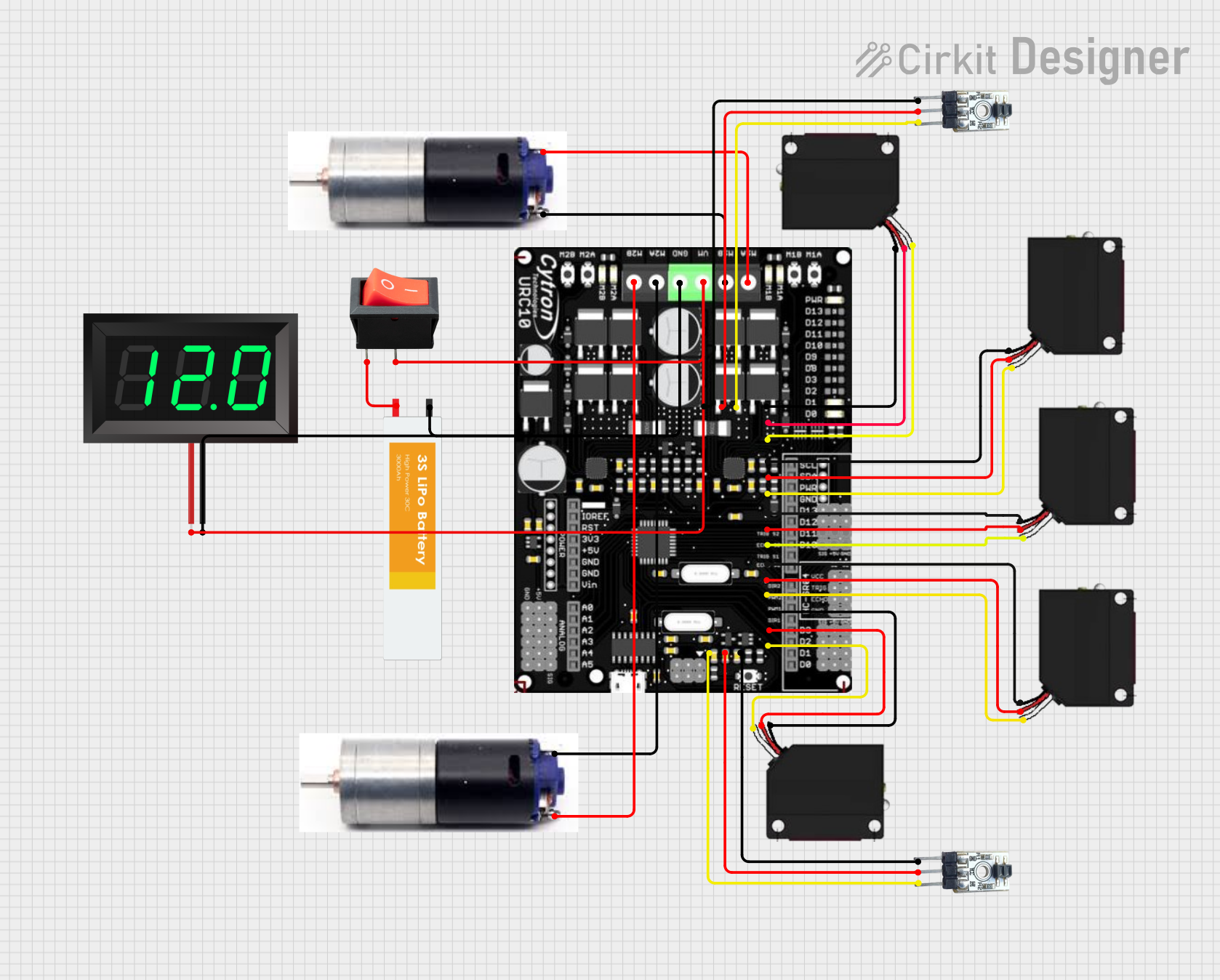
 Open Project in Cirkit Designer
Open Project in Cirkit DesignerExplore Projects Built with MASSIVE RC V2

 Open Project in Cirkit Designer
Open Project in Cirkit Designer
 Open Project in Cirkit Designer
Open Project in Cirkit Designer
 Open Project in Cirkit Designer
Open Project in Cirkit Designer
 Open Project in Cirkit Designer
Open Project in Cirkit DesignerCommon Applications and Use Cases
- Robotics: Control of robotic arms, drones, and other automated systems.
- Home Automation: Remote control of lights, fans, and other household appliances.
- Industrial Automation: Management of machinery and equipment in industrial settings.
- RC Vehicles: Operation of remote-controlled cars, boats, and aircraft.
Technical Specifications
Key Technical Details
| Parameter | Value |
|---|---|
| Operating Voltage | 3.3V - 5V |
| Operating Current | 20mA |
| Signal Frequency | 2.4 GHz |
| Range | Up to 100 meters |
| Channels | 6 |
| Dimensions | 50mm x 30mm x 10mm |
| Weight | 15 grams |
Pin Configuration and Descriptions
| Pin Number | Pin Name | Description |
|---|---|---|
| 1 | VCC | Power supply (3.3V - 5V) |
| 2 | GND | Ground |
| 3 | CH1 | Channel 1 signal output |
| 4 | CH2 | Channel 2 signal output |
| 5 | CH3 | Channel 3 signal output |
| 6 | CH4 | Channel 4 signal output |
| 7 | CH5 | Channel 5 signal output |
| 8 | CH6 | Channel 6 signal output |
| 9 | ANT | Antenna connection for signal transmission |
Usage Instructions
How to Use the Component in a Circuit
- Power Supply: Connect the VCC pin to a 3.3V or 5V power source and the GND pin to the ground of your circuit.
- Signal Outputs: Connect the CH1 to CH6 pins to the respective control inputs of the devices you wish to control.
- Antenna: Attach an appropriate antenna to the ANT pin to ensure robust signal transmission.
Important Considerations and Best Practices
- Power Supply: Ensure that the power supply voltage is within the specified range (3.3V - 5V) to avoid damaging the component.
- Signal Interference: Keep the antenna away from other electronic components to minimize signal interference.
- Heat Dissipation: Ensure proper ventilation around the component to prevent overheating during prolonged use.
Example: Connecting to an Arduino UNO
Below is an example of how to connect the MASSIVE RC V2 to an Arduino UNO and control an LED using one of the channels.
Circuit Diagram
- Connect the VCC pin of the MASSIVE RC V2 to the 5V pin of the Arduino UNO.
- Connect the GND pin of the MASSIVE RC V2 to the GND pin of the Arduino UNO.
- Connect the CH1 pin of the MASSIVE RC V2 to digital pin 9 of the Arduino UNO.
- Connect an LED to digital pin 9 of the Arduino UNO with a current-limiting resistor.
Arduino Code
// MASSIVE RC V2 Example Code
// This code demonstrates how to control an LED using the MASSIVE RC V2
// connected to an Arduino UNO.
const int ledPin = 9; // Pin connected to CH1 of MASSIVE RC V2
void setup() {
pinMode(ledPin, OUTPUT); // Set the LED pin as an output
Serial.begin(9600); // Initialize serial communication
}
void loop() {
int signal = pulseIn(ledPin, HIGH); // Read the signal from CH1
if (signal > 1500) { // If signal is high, turn on the LED
digitalWrite(ledPin, HIGH);
} else { // If signal is low, turn off the LED
digitalWrite(ledPin, LOW);
}
delay(100); // Small delay for stability
}
Troubleshooting and FAQs
Common Issues Users Might Face
No Signal Reception:
- Solution: Ensure the antenna is properly connected and there are no obstructions between the transmitter and receiver.
Component Overheating:
- Solution: Check the power supply voltage and ensure it is within the specified range. Provide adequate ventilation.
Interference with Other Devices:
- Solution: Change the operating frequency or relocate the component to minimize interference.
FAQs
Q1: Can I use the MASSIVE RC V2 with a 12V power supply?
- A1: No, the operating voltage range is 3.3V to 5V. Using a 12V power supply may damage the component.
Q2: What is the maximum range of the MASSIVE RC V2?
- A2: The maximum range is up to 100 meters in an open area without obstructions.
Q3: How many devices can I control with the MASSIVE RC V2?
- A3: You can control up to 6 devices using the 6 available channels.
Q4: Can I use the MASSIVE RC V2 for wireless data transmission?
- A4: The MASSIVE RC V2 is primarily designed for remote control applications. For wireless data transmission, consider using a dedicated data transmission module.
This documentation provides a comprehensive guide to using the MASSIVE RC V2 remote control system. Whether you are a beginner or an experienced user, following these instructions and best practices will help you achieve reliable and precise control of your electronic devices.